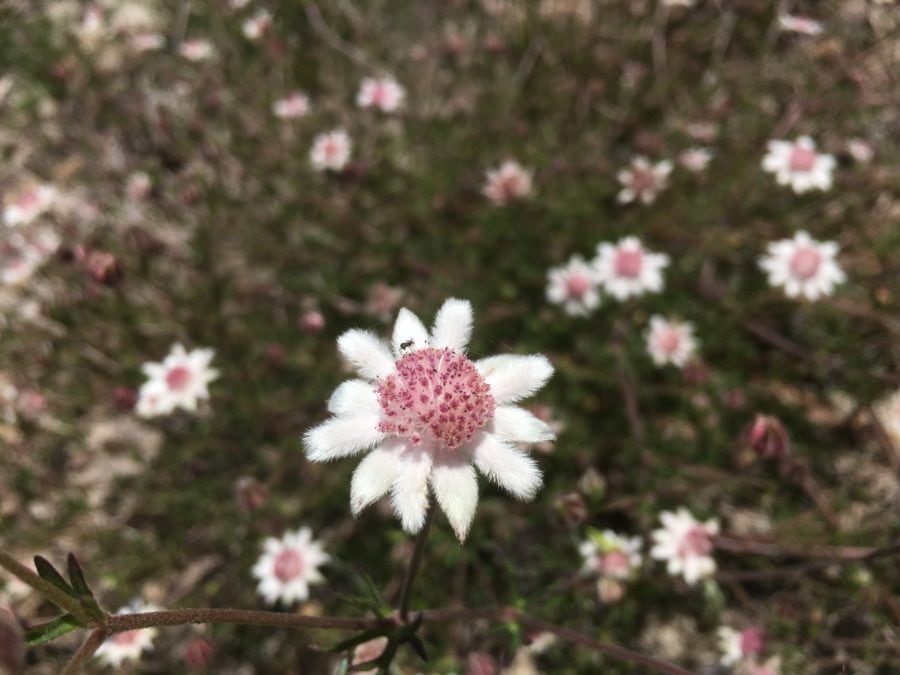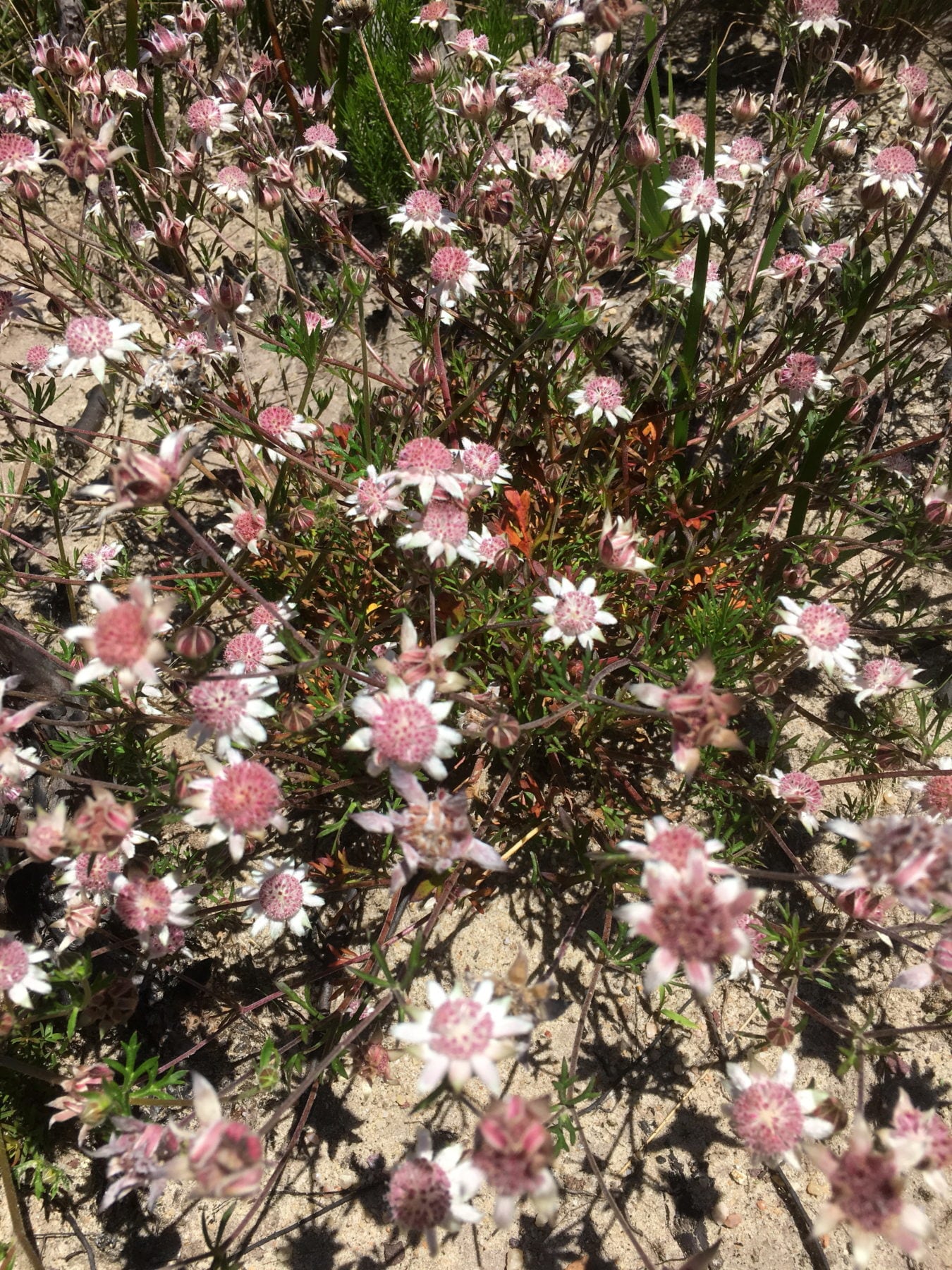Rare pink flannel flowers bloom after bushfires

On a stony, bushfire-ravaged slope overlooking a Blue Mountains valley near Katoomba, NSW, ultra-rare pink flannel flowers bloom in their thousands, bringing new life and colour to landscape still charred by the fiery summer of 2019/20.
Pink flannel flowers (Actinotus forsythii) only occur in scattered parts of eastern Australia, from the Blue Mountains to north-eastern Victoria. They favour heath and open forest areas at altitude. While not endangered as a species, they appear so infrequently that many bushwalkers have never seen them. The seeds can lay dormant for years on end, waiting for a special confluence of events forming the right conditions for their emergence – a year or so after bushfire followed by rainfall, which is exactly what the flower’s home turf experienced last year.

Looking like daisies at first glance, pink flannel flowers consist of a cluster (umbel) of tiny pink flowers fringed not by petals, but by 11–12 furry-textured white or light pink bracts (modified leaves). About 1–3cm across, the flowers grow in spreading clumps to 50cm high.
The genus name Actinotus means ‘bearing rays’, referring to the radiating bracts. It also sums up what pink flannel flowers bring their ravaged country – a ray of hope and renewal.

